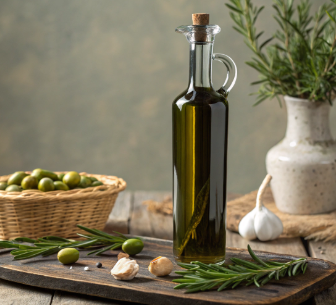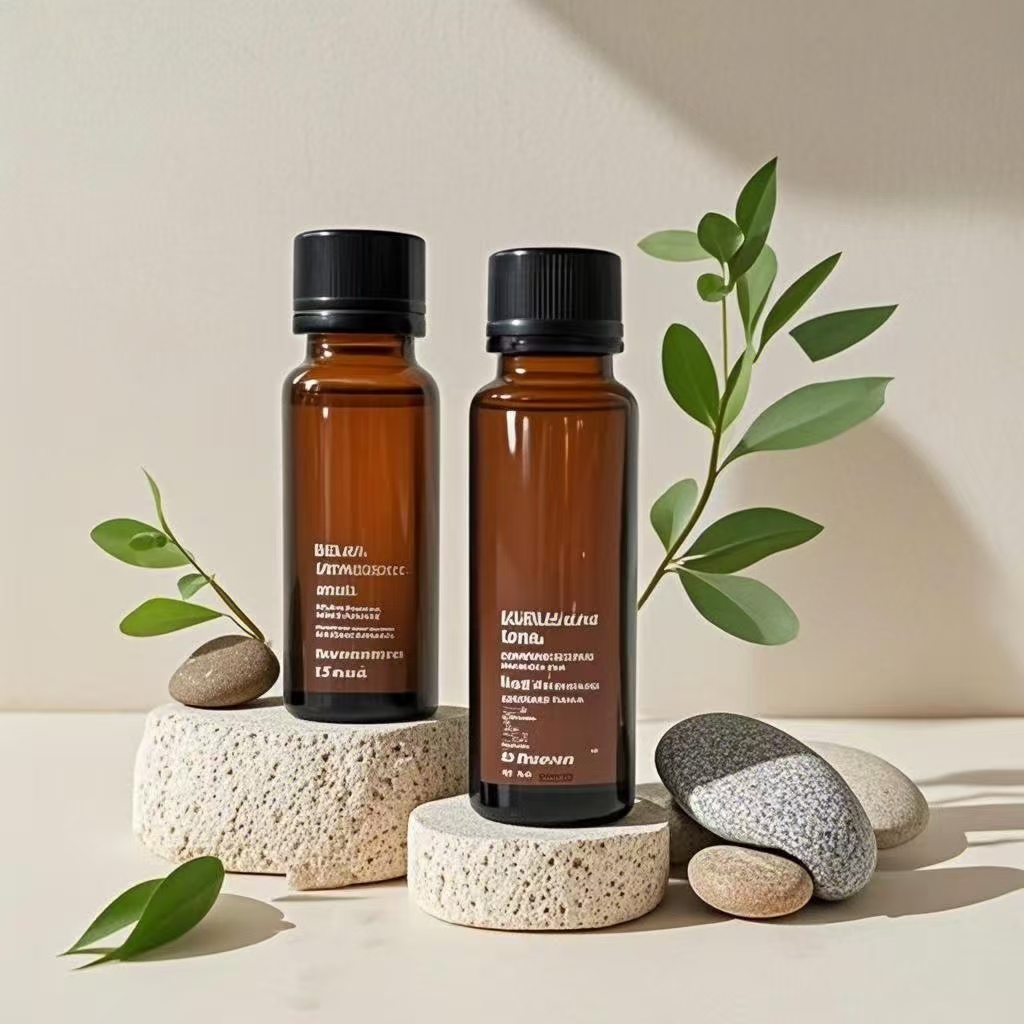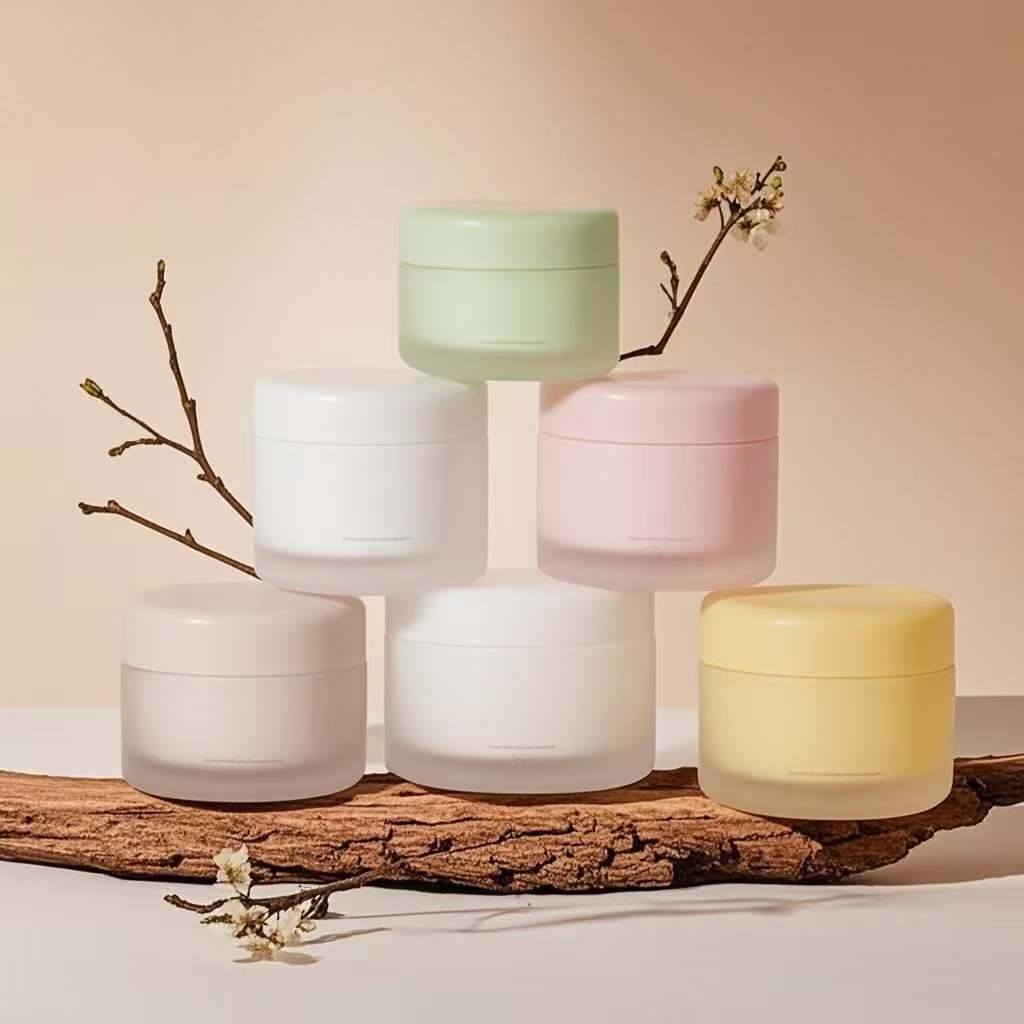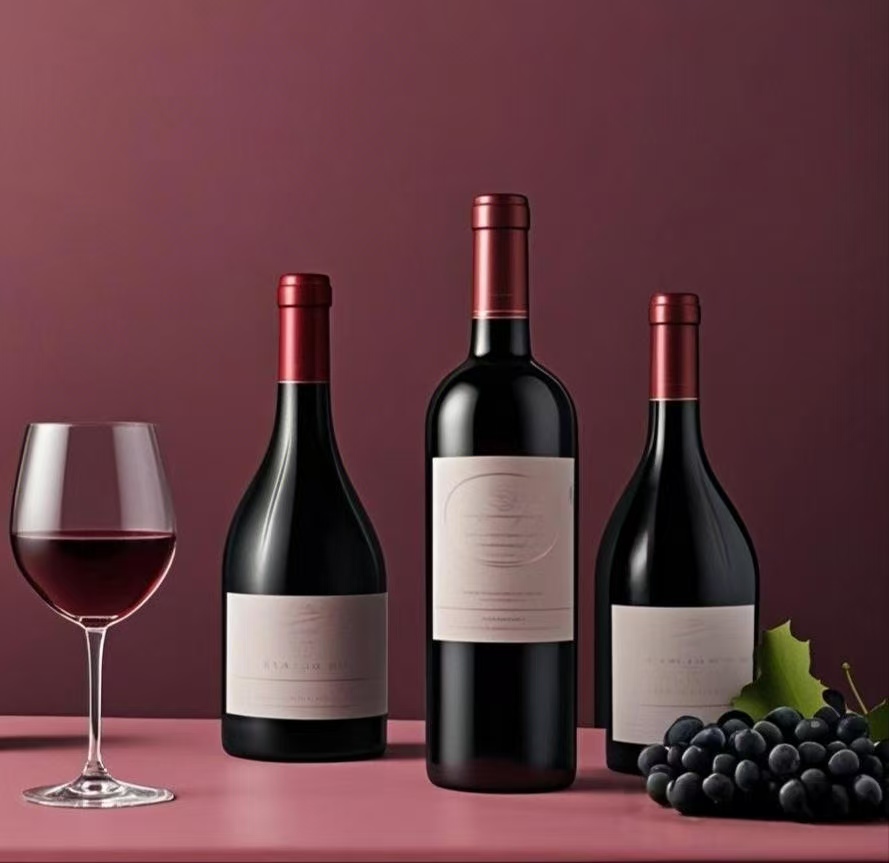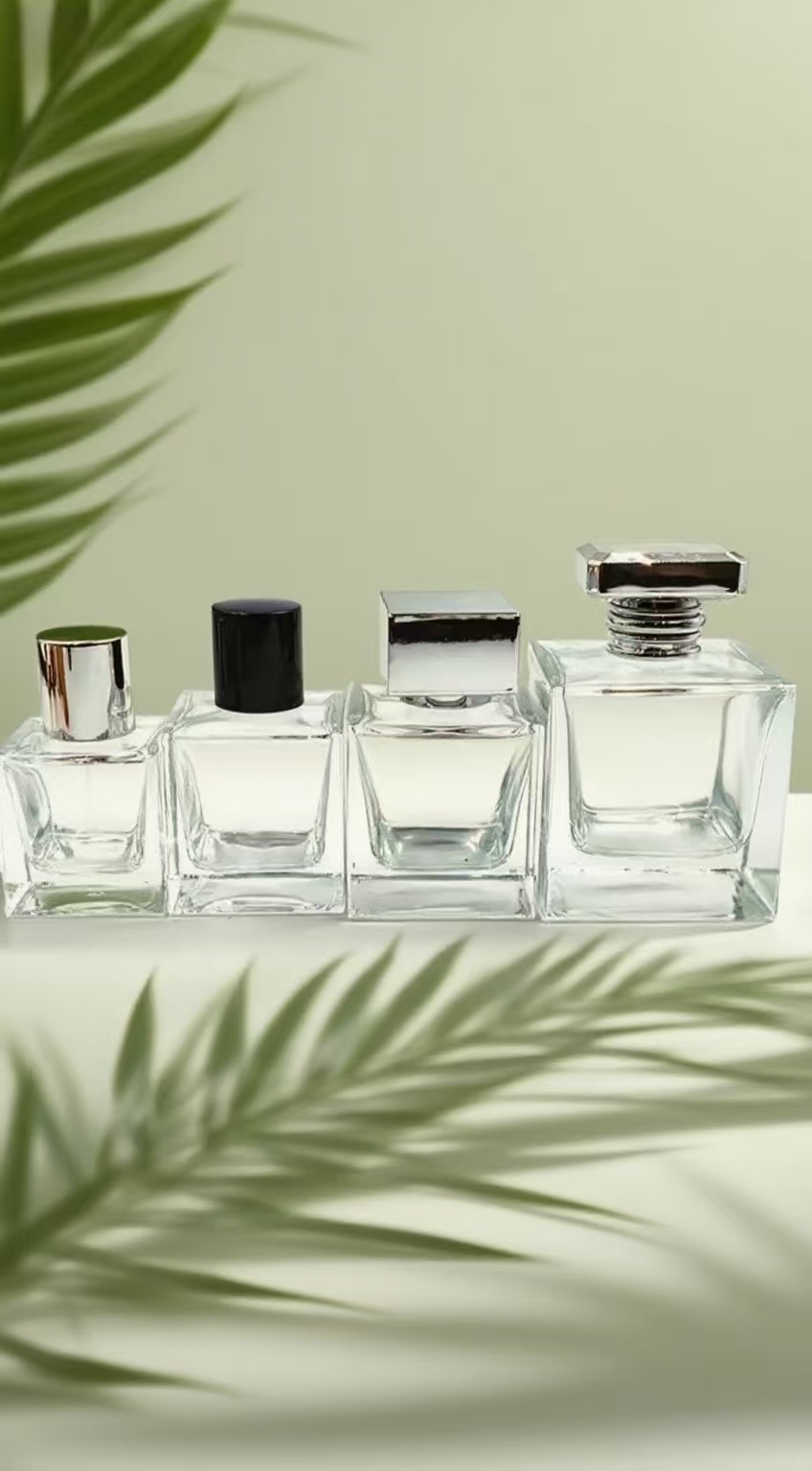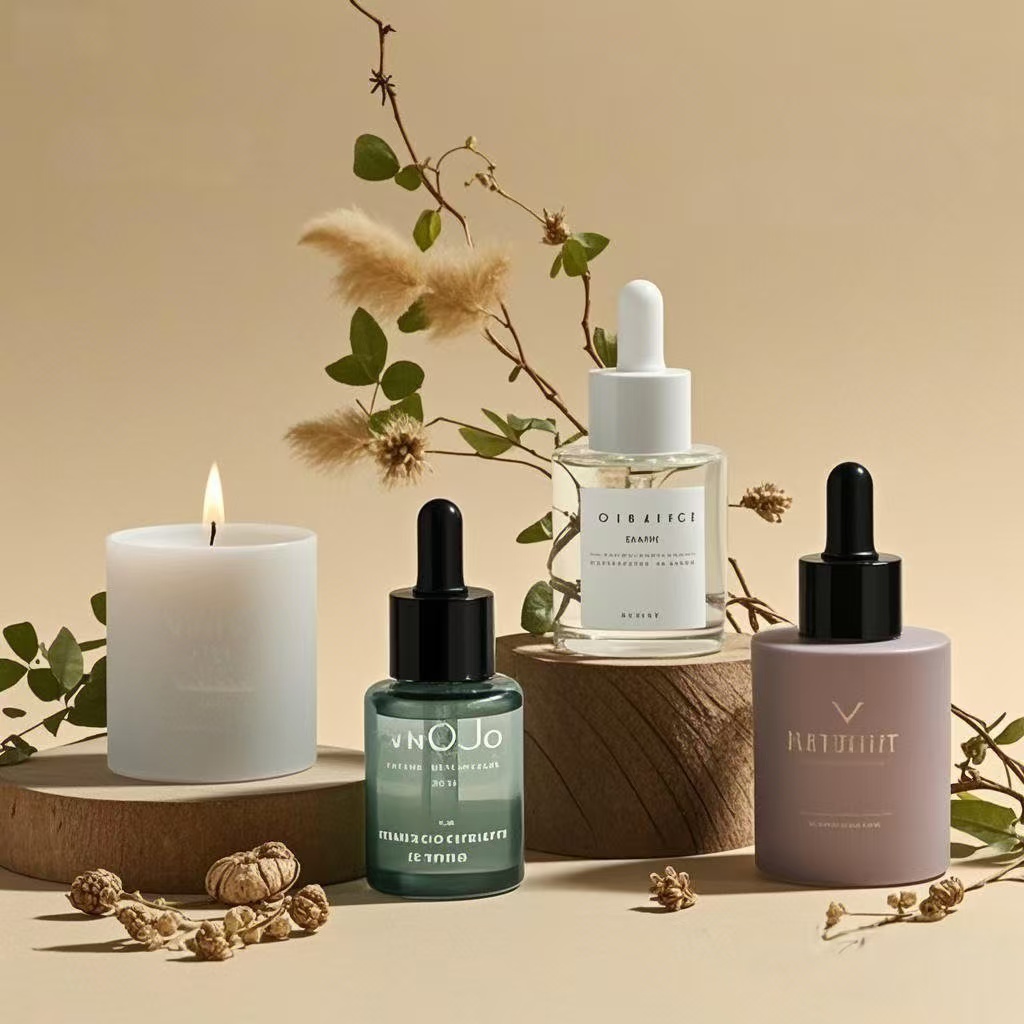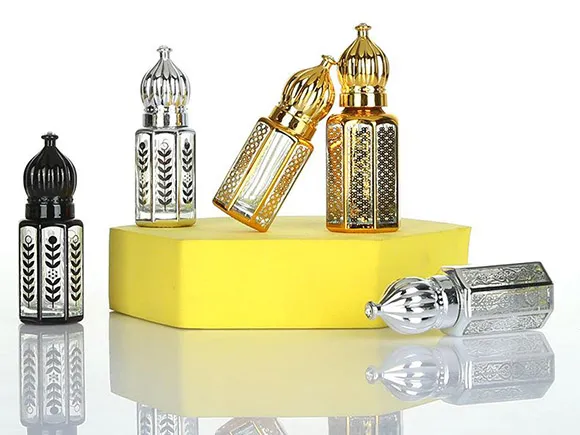Dark glass bottles for olive oil do the same, just like a bottle of red wine. Factories use these bottles to export olive oil in bulk and preserve the rich taste. For additional UV protection, most consumers select dark green or brown glass. Nearly all bottles are equipped with leak proof caps and convenient pour spouts. To balance advantages and select the appropriate variety, read on for specifics.


Why Dark Glass Bottles?
Light, especially UV rays, can degrade the oil’s natural compounds. This includes chlorophyll, which can trigger oxidation and spoil the oil. UV rays accelerate rancidity, causing off flavor and nutrient degradation. Green glass too– olive oil can begin to degrade in green glass in only 150 days in ordinary light. Research indicates that oil packaged in clear bottles can turn rancid even more quickly. Even though dark glass decelerates this, it is not an impenetrable shield. Even oil in dark green glass can start to show signs of photo-oxidation after just five months. So, while dark glass is a lot better than clear, it can’t completely halt the process.
Here are the main reasons why dark glass bottles are chosen for olive oil:
-
Block Harmful Light: Dark glass bottles stop most UV rays from reaching the oil. This preserves the flavor, aroma and medicinal compounds.
-
Slow Down Rancidity: By limiting light, dark glass slows the breakdown of oil. This makes the oil last longer and taste fresher.
-
Protect Nutrients: Olive oil is valued for its antioxidants and vitamins. Dark glass helps protect these nutrients by blocking light that can break them down.
-
Improve Shelf Appeal: Dark bottles look premium and give a sense of quality. A lot of people choose dark bottles because they believe them to preserve the freshness of the oil.
-
Practical Industry Choice: Many brands use dark bottles to hide changes in oil color. This can assist in camouflaging sub-par or blended oils, but the primary intent is protection.
That said, dark glass is good, but not perfect. For optimal quality, olive oil should be kept out of light, even in dark bottles. Opaque or metal containers may provide even more robust protection.
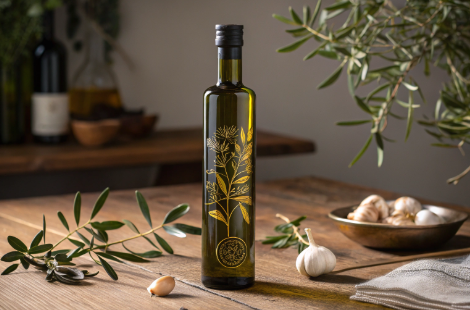

The Science of Preservation
That’s where the dark glass bottles come in — the key to keeping olive oil fresh. Olive oil is susceptible to light, heat and air. When oil gets too much light, its taste diminishes quickly and its nutritious components degrade. Green or amber tinted glass, for example, blocks out the majority of the sunlight. This delays the rate at which the oil’s flavor and healthy fats go rancid.
There are two main things that ruin olive oil: oxidation and hydrolysis. Both can make oil go rancid and lose its benefits. The table below illustrates how these spoilages appear in olive oil.
|
Type of Rancidity |
Cause |
Effect on Olive Oil Quality |
|---|---|---|
|
Oxidative |
Light, oxygen, heat |
Off-flavors, loss of nutrients |
|
Hydrolytic |
Water, enzymes |
Soapy taste, lower shelf life |
Opaque things, like dark glass or tins, are ideal. They filter out the majority of light, protecting the oil from UV rays that accelerate spoilage. A 2018 research demonstrated that heat and light both accelerate oil’s deterioration, and the correct bottle can decelerate it. For instance, tin and dark glass maintained olive oil for 180+ days at 20 °C. Plastic, such as polyethylene, did less well. One test, for example, found the phenols — a big health piece — fell from 363 to 193 mg/kg in plastic. In green and dark glass, nearly all phenols gone by 300 days, but still did better than clear or plastic.
Glass is also inert, food-safe. It doesn’t emulsify with the oil or alter its flavor. To make it even better, glass is endlessly recyclable, without any loss of quality. This makes it a clever selection for both oil quality and planetary well-being.
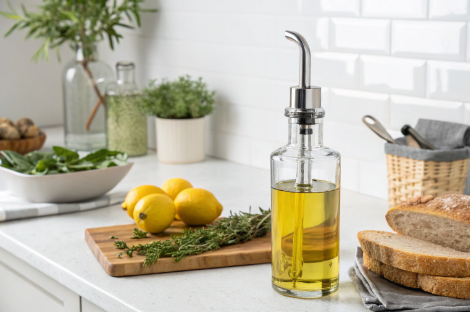

Choosing the Right Bottle
Selecting the appropriate bottle for olive oil preserves its flavor and nutritional value. Glass for great preservation. Dark glass bottles prevent UV rays from breaking down the oil. Clear bottles allow light to penetrate and can ruin oil in mere weeks. Dark glass impedes this, but does not halt it. Opaque and metal bottles provide the greatest protection, but dark glass strikes a balance of protection and usability, fitting most home kitchens and small businesses.
Medium size counts as well. Bottles of 250 to 500 ml are perfect for at-home or gifting. Larger sizes, 750 ml to 1 liter, accommodate commercial requirements. It’s smart to use 9 to 12-ounce (about 250 to 350 ml) bottles because that is optimum for keeping oil fresh. Filling smaller bottles usually aids in slowing spoilage.
It’s not just drinking that counts. Spouts that include additional air holes enable you to pour without large drips or splashes. This control translates to less waste and less mess, which are essential for busy kitchens. Airtight lids keep air out, preventing oxidation. This prevents the oil from tasting rancid or losing its nutritional worth.
Quality matters. Opt for thick, strong glass bottles. Great bottles resist chips and cracks, and are dishwasher safe. Glass remains a favorite for its green factor—Europe recycles 76% of it, which is a clever, green option for brands and shoppers.
Key points to weigh when picking a bottle:
-
Dark glass for UV protection and flavor
-
Moderate size for frequent refilling
-
Airtight lid to block air
-
Spout with air intake for smooth pouring
-
Strong, dishwasher-safe glass for long use
-
Eco-friendly and easy to recycle
The Psychology of Packaging
Dark glass bottles do more than protect olive oil, they influence consumer perception and selection as well. When consumers notice a dark bottle, they associate it with top quality and attention. The colors block light, which keeps the oil fresh and the look often lends a feeling of trust and sophistication. We all know that first impressions from packaging can be the only opportunity to steal a glance on an over-stocked shelf. How a bottle looks and feels—the weight, the color of the glass, the shape of the neck—can evoke emotions such as premium or even sustainability, influencing purchase decisions.
Custom labels take this to an even greater extent. A label with distinct, plain fonts and transparent product photos goes a long way in making a brand different. It can tell a tale or tease the origin of the olive oil, which is what a lot of purchasers seek. Packaging isn’t simply a wrapper, it’s an essential part of the brand’s personality. When the elements — color, shape, label — all collaborate, they construct meaning for the purchaser. They’re more interested in how the entire package looks and feels than in reading the back page small print. That’s why so many premium brands opt for fancy labels and dark glass, to create a feeling of attention and consideration.
Key strategies for branding with dark glass bottles:
-
Utilize opulent, saturated greens or browns for a classy appearance.
-
Choose shapes that feel good to hold and pour
-
Put labels on them with crisp lines and not much wording.
-
Include authentic pictures or icons connected to heritage or location
-
Select legible fonts that fit the brand aesthetic.
Dark glass is not merely aesthetics. It protects the oil from light, which preserves beneficial compounds such as antioxidants and vitamins. It provides bona fide benefits for anyone who is health conscious because light can degrade these good bits.2.
Proper Olive Oil Storage
Olive oil is vulnerable to light, heat, air, and surrounding odors. Proper storage preserves its taste and nutritional qualities. Dark glass bottles do help, but not all bottles are created equal. Proper storage is more than just selecting the appropriate bottle.
Store olive oil in a cool, dark spot, away from heat. The best temperature is close to 18°C (65°F), which stops the oil from breaking down fast. Do not keep olive oil near stoves, windows, or direct sunlight. Even the light from a kitchen lamp can speed up spoilage if the bottle is not dark enough. Research points out that olive oil in clear bottles can lose quality within 150 days. Even green or dark glass can only slow, not stop, this loss. For longer shelf-life, containers that block all light—like metal tins or multilayer paperboard—work best.
Bottles[sic] tight is key. Air can infiltrate and alter olive oil’s flavor and aroma. Be sure to close the lid after you pour. Once open, it’s best to consume the oil within 30 to 60 days. This preserves its flavor and healthful compounds at their maximum.
Keep olive oil away from strong odors and cleaning supplies. The oil smells up or absorbs the aromas of its environment, which wrecks its flavor.
Checklist for proper storage:
-
Block the light with dark glass, opaque or metal containers.
-
Keep at approximately 18°C (65°F), never close to heat.
-
Leave bottles sealed tight to prevent air intrusion.
-
Use opened oil within two months.
-
Store away from strong smells or chemicals.
-
For longer storage, consider foil or multilayer paperboard containers.
Enhancing Your Bottle
The right bottle does more than protect olive oil. It forms the attitude of consumers toward the product and its usage. Dark glass bottles, as with green or amber, shield the oil from light and therefore decelerate oxidation. This maintains flavor, aroma and health characteristics longer than clear glass or plastic. Glass also does not react with oil, so the taste stays pure. Green glass bottles are very common for olive oil. They add that vintage feel that whispers heritage and attention. A lot of purchasers consider this a quality indicator. This is more than style; it’s shown that dark glass and tin are the best protection from light and air, which preserves the oil’s phenolics. These are the components that render olive oil both healthy and flavorful. In clear glass or plastic, these degrade sooner. As studies demonstrate, clear glass can result in a big drop in phenols in under three months, and plastic can be even worse.
Room to decorate really makes your bottle shine. Personalized labels with crisp typography or vibrant hues give a contemporary or country vibe. Embossed logos or textured glass can add a premium feel. A great cap — think wood-topped cork, brushed metal or tamper-evident seal — not only looks good, but keeps the oil fresh. These touches make the bottle pop on shelves and fit a high-end aesthetic.
|
Packaging Option |
Aesthetic Appeal |
Protection Level |
Cost |
Notable Benefit |
|---|---|---|---|---|
|
Dark glass bottle |
High |
Excellent |
Moderate |
Preserves quality, premium look |
|
Tin container |
Medium |
Excellent |
Moderate |
Strong light/air barrier |
|
Clear glass bottle |
High |
Poor |
Low |
Good for short-term display |
|
Plastic bottle |
Low |
Poor |
Low |
Lightweight, cheap |
Advocating for dark glass is simple when you post facts. That marketing can demonstrate how it preserves the oil’s flavor and nutritional potency. In your campaigns, employ transparent tags, transparent photos, transparent data to highlight the science. It establishes credibility with consumers looking for form and function.
Conclusion
Dark glass bottles are not simply shelf decoration. They preserve olive oil freshness and protect the flavor. That’s why a sturdy, uncomplicated bottle can protect light and air from spoiling what’s inside. Good storage counts, as well. A cool, dry place and a sealed cap do a world of difference. Choosing a perfect bottle for your oil speaks volumes to everyone who is exposed to it–at home, in a store or in a coffee house. For a reason, many premium brands opt for dark glass. Wish to extend the life and taste of your olive oil? Test out dark glass bottles for your next batch/order. For additional assistance or to view live samples, contact our team.
Frequently Asked Questions
Why should olive oil be stored in dark glass bottles?
This slows oxidation and helps preserve its flavor, nutrients and shelf life.
Can clear glass bottles harm olive oil quality?
Yes. Glass that’s not clear, on the other hand, emanates a sense of premium quality and fewer respects for the environment. Dark glass is best.
What type of dark glass is best for olive oil?
Amber or green glass bottles work best. They block more light than clear or lightly tinted glass, which can keep olive oil fresh longer.
Does bottle size affect olive oil freshness?
Yes. The smaller bottles are preferable if you use the olive oil sparingly. Less oxidation keeps the oil fresh and tasty.
How should olive oil bottles be stored at home?
Keep bottles in a cool, dark place, away from heat and sunlight. This prolongs the oil’s shelf life and preserves its nutrients.
Can dark glass bottles be reused for olive oil?
Yes. Wash bottles out good before refilling! This keeps it from being contaminated and guarantees the oil’s quality and safety.
Why is packaging important for olive oil?
Packaging not only affects preservation but appearance. Smart packaging, such as dark glass, preserves oil and attracts quality-conscious consumers.




